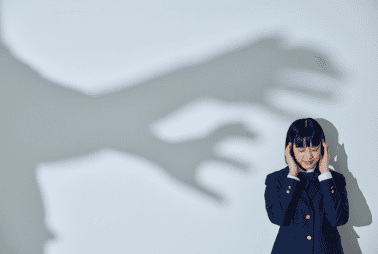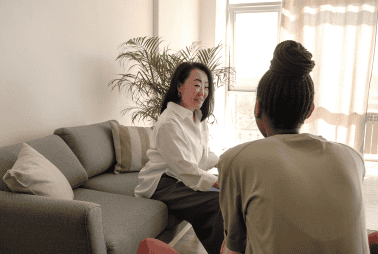Generalized Anxiety Disorder (GAD) is one of the most common mental health conditions, affecting millions of people who experience excessive worry about everyday life. It often shows up quietly, through physical symptoms like muscle tension, fatigue, or an upset stomach, and emotional signs like constant worry, panic attacks, or irritability.
At Mental Health Resource, we understand how deeply generalized anxiety can disrupt work, relationships, and daily peace. The good news? Generalized anxiety disorder can be treated with evidence-based care that improves both emotional and physical well-being. If you’re struggling with anxiety symptoms, you’re not alone, and help is available.
Understanding Generalized Anxiety Disorder (GAD)
Generalized anxiety disorder (GAD) is a long-lasting form of anxiety disorder that involves persistent, excessive anxiety and worry that interfere with daily life. Unlike short-term acute anxiety that comes and goes, GAD causes ongoing distress that may include:
- Muscle aches, fatigue, or unexplained pains
- Trouble sleeping or not getting enough sleep
- Constant tension and muscle tension
- Racing thoughts and fear about multiple aspects of everyday life
- Difficulty concentrating or making decisions
The Diagnostic and Statistical Manual of Mental Disorders (DSM-5), published by the American Psychiatric Association, outlines the following symptoms as criteria for a GAD diagnosis. These symptoms must cause significant distress or interfere with functioning for six months or more.
GAD may occur alongside panic disorder, substance abuse, depression, or other mental health conditions, which can make treating GAD more complex, but also more crucial.

Co-Occurring Conditions and Generalized Anxiety Disorder (GAD)
Generalized anxiety disorder rarely exists in isolation. In fact, many individuals experiencing GAD also face other mental health challenges that can intensify symptoms, complicate treatment, or delay recovery. Recognizing and addressing these co-occurring conditions is essential to treating GAD effectively and holistically.
Panic Disorder and GAD
One of the most common co-occurring conditions with GAD is panic disorder. While GAD involves persistent, long-term worry, panic disorder is characterized by sudden, intense episodes of fear known as panic attacks. The two often overlap—frequent worry can increase the likelihood of panic attacks, and the fear of future attacks can make anxiety symptoms worse. People may begin avoiding places or situations that trigger anxiety, further reinforcing avoidance behaviors and distress.
Depression and Mood Disorders
Many people with GAD also struggle with major depressive disorder or other mood disorders. The emotional toll of living with constant worry can lead to feelings of hopelessness, low motivation, or emotional exhaustion. If left untreated, GAD combined with depression may increase the risk of suicidal ideation or substance use, making early intervention and comprehensive support especially important.

Trauma and PTSD
A history of trauma is another significant factor in developing GAD. Whether it’s a traumatic event in childhood or a distressing life change in adulthood, trauma can alter the brain’s ability to regulate fear and stress responses. This can make people more sensitive to perceived threats and trigger anxiety even in relatively safe environments. In these cases, talk therapy approaches like trauma-informed CBT or EMDR can be vital tools for recovery.
Substance Use and GAD
Substance use is often an attempt to self-medicate symptoms of GAD. People may use alcohol, cannabis, or other substances to “take the edge off” anxiety, but over time this coping mechanism can become counterproductive and dangerous. Substance use not only complicates the brain’s chemistry but can actually make anxiety worse and increase the likelihood of dependency. Treating GAD in the context of co-occurring substance use requires an integrated, dual-diagnosis approach.
When it comes to treating GAD, identifying and addressing these co-occurring conditions is crucial. A personalized treatment plan—often involving talk therapy, cognitive behavioral strategies, and lifestyle adjustments—can help manage both anxiety and the mental health conditions that accompany it.
How Is Generalized Anxiety Disorder Treated?
Treatment for generalized anxiety disorder often includes a combination of talk therapy, medication, and lifestyle adjustments tailored to the individual. There is no one-size-fits-all solution, but many people experience lasting relief through a treatment plan designed with a mental health professional.
Here are the main treatments supported by research and clinical practice:
1. Cognitive Behavioral Therapy (CBT)
Cognitive behavioral therapy (CBT) is considered the gold standard for treating anxiety disorders. CBT helps people understand how their thoughts contribute to anxiety, and teaches skills to challenge those thought patterns.
CBT for GAD focuses on:
- Identifying triggers that worsen anxiety
- Practicing cognitive restructuring to reduce negative thinking
- Using relaxation techniques like deep breathing and progressive muscle relaxation
- Building healthy coping tools for everyday life
Research in journals like JAMA Psychiatry supports CBT’s effectiveness in reducing symptoms of generalized anxiety disorder GAD and improving overall mental health.
2. Medication Options
Sometimes, medication may be recommended alongside therapy to relieve anxiety and manage severe symptoms. Common medications used to treat generalized anxiety disorder include:
- Selective serotonin reuptake inhibitors (SSRIs) – often first-line anti-anxiety medications
- Serotonin-norepinephrine reuptake inhibitors (SNRIs)
- Tricyclic antidepressants for more complex cases
- Other prescribed medications depending on your medical history, symptoms, and possible co-occurring medical conditions
It’s important to work with a provider to monitor side effects such as weight gain, fatigue, or sexual side effects, and to make adjustments if necessary.
3. Mind-Body and Lifestyle Support
In addition to therapy and medication, treating generalised anxiety disorder often includes strategies that enhance the body’s natural resilience:
- Mindfulness meditation and acceptance and commitment therapy
- Reducing recreational drugs and managing any substance abuse
- Getting enough sleep and exercising regularly
- Choosing to eat healthy and prioritize your physical health
- Joining support groups or group therapy sessions
- Tracking symptoms with a mental health professional for ongoing care
These adaptive coping strategies can reduce your reliance on maladaptive behaviors like avoidance or rumination, which often develop in response to chronic stress.

How to Support Someone with Generalized Anxiety Disorder (GAD)
Supporting someone with Generalized anxiety disorder (GAD) means offering patience, compassion, and practical tools that help them feel seen, not judged. GAD isn’t just “being a worrier”—it’s a diagnosable mental health condition characterized by excessive worry that can interfere with daily life. People with GAD often experience both emotional and physical symptoms, including muscle tension, fatigue, and irritability—even when there’s no clear cause.
Listen Without Dismissing
People with GAD may feel anxious about things others find routine or manageable. Dismissing their fears with phrases like “just relax” or “you’re overthinking” can minimize their experience. Instead, acknowledge their emotions, validate their concerns, and offer reassurance without trying to “fix” the problem right away.
Encourage Professional Help
Remind your loved one that they don’t have to face GAD alone. The National Institute for Health and Care Excellence (NICE) recommends a combination of talk therapy, self-help strategies, and, in some cases, medication to treat GAD. A physical exam may also be recommended to rule out any underlying health issues that could mimic anxiety symptoms.
Support Daily Wellness Practices
Help your loved one integrate relaxation techniques such as deep breathing, mindfulness, or yoga into their daily life. These techniques can help symptoms improve over time and provide moments of calm when anxiety peaks. Some people also explore herbal remedies or supplements, but it’s important to consult a health care provider before starting anything new.
Explore Support Groups
Support groups can offer a sense of community, especially when it feels like no one else understands. Whether in person or online, hearing from others living with generalized anxiety disorder GAD can provide encouragement and reduce feelings of isolation.
Be a Steady Presence
Your consistent presence can be one of the most powerful forms of support. Whether it’s helping them stick to a therapy routine, reminding them of coping skills, or simply being there during moments of heightened anxiety, your stability helps them feel less alone in their journey.
When to Seek Help
If anxiety symptoms interfere with your daily life, make it hard to focus, or lead to physical or emotional exhaustion, it’s time to reach out. Generalized anxiety disorder treated early can greatly reduce long-term complications and help prevent the development of other mental disorders.
Delaying care can allow symptoms to worsen, and untreated anxiety may lead to serious mental health problems, including depression or substance use. Remember: feeling anxious doesn’t have to be your normal.

How Mental Health Resource Can Help
At Mental Health Resource, we’re here to help you better understand, navigate, and access care for generalized anxiety disorder (GAD) and other anxiety-related disorders. While we do not provide direct clinical treatment, our mission is to connect individuals and families with trusted information, helpful tools, and pathways to professional support.
If you or a loved one is feeling overwhelmed by excessive worry or struggling with the daily impact of anxiety-related disorders, Mental Health Resource is a starting point. We help you explore options, learn what works, and move forward with clarity and confidence—because understanding is the first step toward healing.
Resources:

